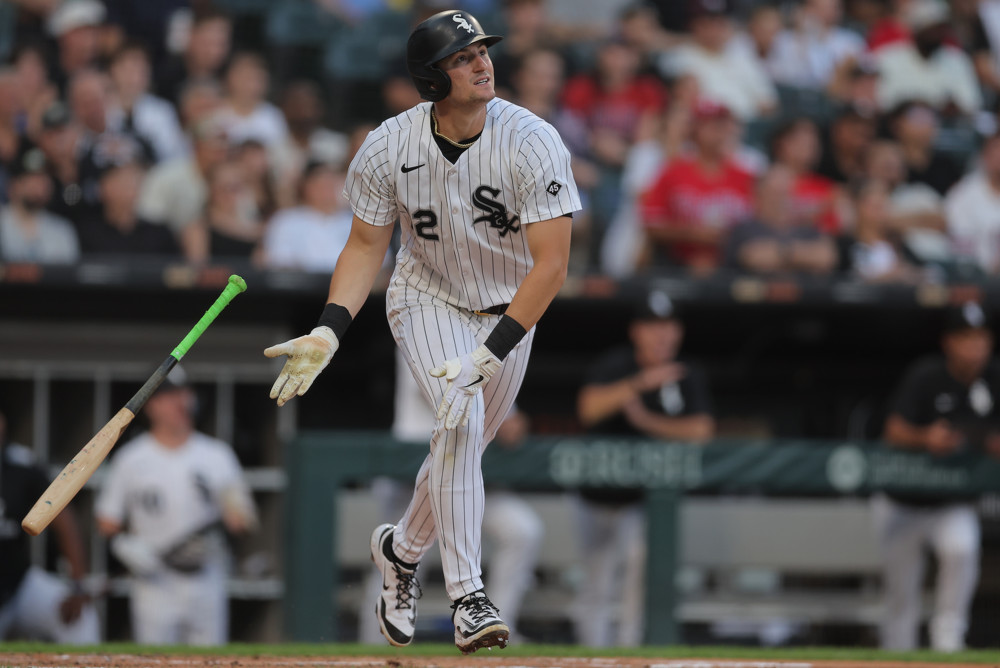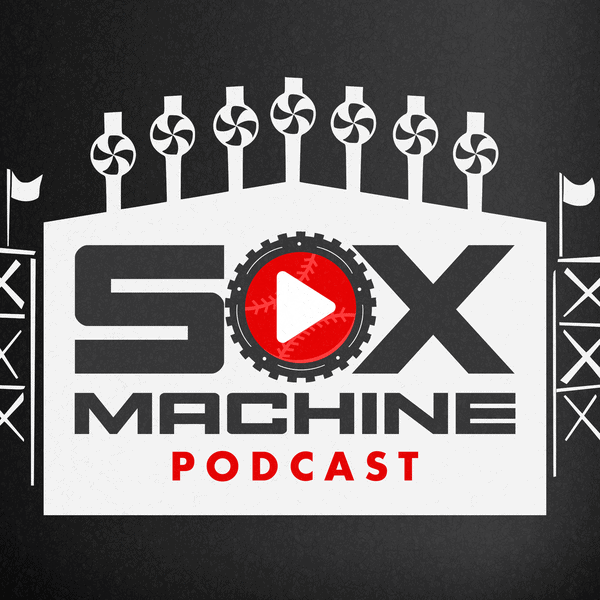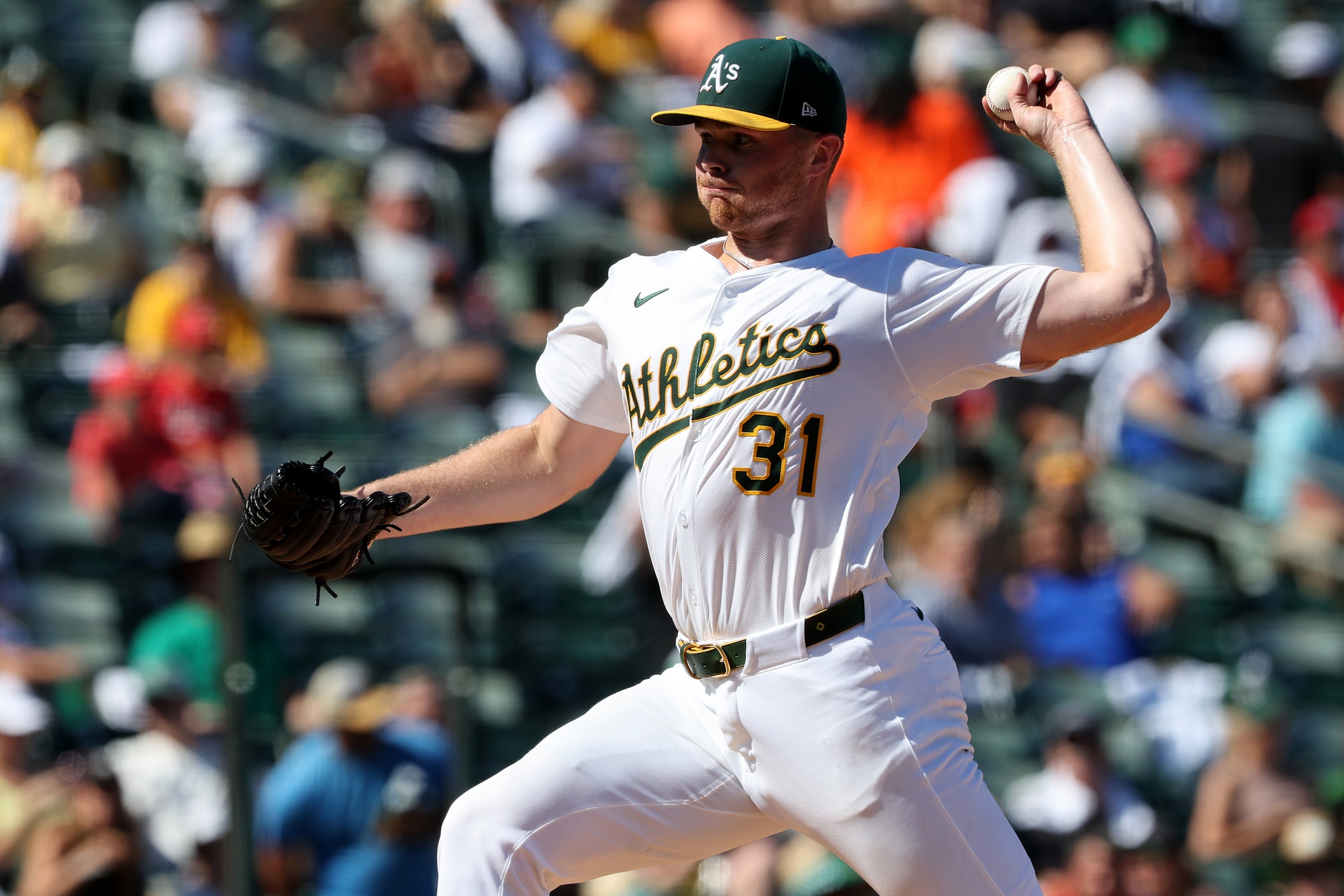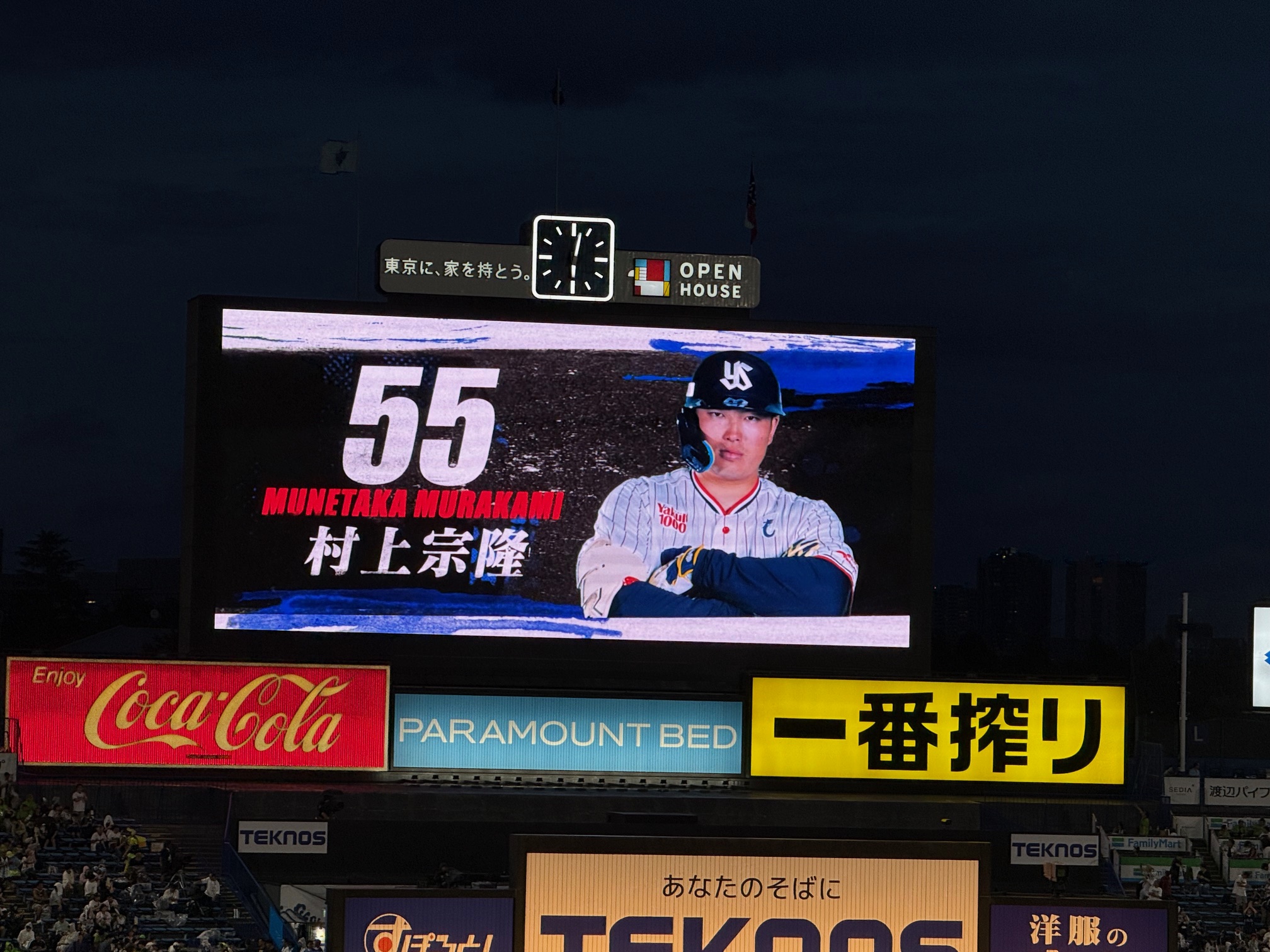Shohei Ohtani, Cal Raleigh, Junior Caminero and Kyle Schwarber are the four MLB players who hit more home runs after the All-Star break than the 21 collected by Colson Montgomery. The list of players that posted a lower slugging percentage than Montgomery in the second half of this season includes Raleigh, Juan Soto, Freddie Freeman and Corbin Carroll.
Eye-popping small samples have driven overreactions in both directions during the early stages of Montgomery's pro career, but this is not a stretch someone with normal physical ability can stumble into.
"I've always had some power and have always just been explosive," said Montgomery, not betraying much shock at a stretch of roughly 250 plate appearances during which he hit 10 balls farther than 400 feet, and took nearly 100 in-game swings with a Statcast-measured bat speed over 80 mph. His average swing speed of 77 mph for the season has him tied with Aaron Judge. As a rookie, Montgomery made contact slightly more often than Judge's career rate; a fact worth stowing away for later.
Always tall and long-levered from the night he was drafted, Montgomery was projected to mature into above-average raw power eventually. For a public that had only seen his progress in dribs and drabs before he arrived in Chicago, it feels like a rapid journey to full maturation of monstrous juice. But when you're 23, few things feel as distant as the person you were at 19.
"I think it's just me growing up, getting older, more physical and getting into my strength," said Montgomery, for whom the last two years have moved quickly at times, and slowly at others. "When I was drafted, I was just a teenager, I was young and there was a lot of projectability with it. I don't know, I think it's just from weight training and things like that. I don't really do any bat speed training."
Why train to gain what you already have?
In a postgame scrum during the second half, Scott Merkin of MLB.com asked Montgomery if he considered himself a power hitter. There were snickers in immediate response, because Montgomery had hit a ball to France earlier in the evening, and his early handiwork has looked the part in a way that's hard to fake.
But to my colleague's point, Montgomery's previous season-high for homers were the 18 he hit in a largely miserable 130-game campaign at Triple-A Charlotte last year, despite his homer-friendly environs. In his injury-shortened 2023 season that firmed up Montgomery's top prospect bonafides to evaluators across the league, he hit eight home runs in 64 games. When he left the park, he did it with authority, but Montgomery's plate discipline and on-base ability rightly drove the conversation around his low-minors performance.
Even now, when 450-foot bombs and week-long homer streaks take top billing for Montgomery's offensive value, he warns against the danger of chasing such results.
"There's times where you try to swing as hard as you can, and usually you don't hit it," Montgomery said. "What I've kind of learned is when I'm just trying to be easy and not swing hard, that's when I do swing the fastest."
An awkward step on the first base bag with his right foot meant that the final image of Montgomery's 2025 season was him hobbling off with soreness that the team expects to be resolved "well before spring training." But prior to that, he ended the year on a 10-game hitting streak, slashing .359/.419/.667 over that span. The late flurry lifted his season OBP to .311 after it had dipped to as low as .280 earlier in September, reflecting that the on-base ability and plate discipline (he had a roughly league average chase rate) that once defined Montgomery is still grappling with the wave of changeups and backfoot breaking balls that have greeted him at Triple-A and the majors.
Focusing on Montgomery's awesome power, his prodigious bat speed, is not just ogling for it's own sake, because when his game was at its lowest point this April, leveraging his physical gifts was a key point for pulling him out of more acute chase struggles than what he's dealing with now.
"Me and [director of hitting] Ryan Fuller, when we were in Arizona, it helped that I can let the ball travel," Montgomery said. "I can let the ball travel and get deep and be able to hit homers to pull side or left-center or whatever. Just having that clarity of knowing I can let the ball travel and I'm not really-- well, you're going to get beat on fastballs. But I think if you put in your mind that you won't get beat on fastballs, and that's kind of what I've done, I can let the ball travel and I'm not going to get beat by their best fastball."
This is a concept that's popped up with Luis Robert Jr., who rarely pulls fastballs in the air, leveraging his bat speed as a tool to steal an extra fraction of a second to track pitches and curb his oft-aggressive swing decisions, while still being physically quick enough to catch up to velocity and physically strong enough to punish it to the back side. Similarly but ideally less extreme, Montgomery says his approach is to try to hit fastballs to left-center and catch offspeed out in front, trusting that he has the strength and bat speed to be dangerous in either scenario.
"It's even what Joel [McKeithan] and Marcus [Thames] talk about with me is I've just got to be ready for their hardest fastball at the top of the zone," Montgomery said. "If I can cover that, you can cover everything down. So it's just a lot of learning experiences. Last year I tapped into some of the power with homers and things like that, but I think I grew more as a hitter and understanding what I need to do at the plate from the beginning of this year."
Some indicators would suggest Montgomery is struggling in some of these aspects. He struck out 29.2 percent of the time in his major league debut, and was closer to 30 percent after the All-Star break when he hit all of his homers. That's backed up by a 70.1 percent contact rate for his swings since the break, and the MLB regulars who exist at this level of contact either have elite raw power (like Shohei Ohtani), are below-average hitters (like Ryan McMahon), or are some weird combination of both (Oneil Cruz). You see elite power hitters swing-and-missing this much year-in, year-out, but not anyone else, making it all the more important that rookie-year Montgomery is already keeping pace with names at the top of this article.
As he said, Montgomery has long levers and in-zone whiffs are a natural byproduct of that. The contact-starved hitters who make it work -- James Wood, late-stage Mike Trout, Kyle Schwarber -- get by on being very judicious at what they swing at, and having such elite bat speed and strength that the contact they do make is often game-changing. At a 28.2 percent chase rate (league average is 28.1), Montgomery has some meat left on the bone, but even that mark represents progress from his early season work in Triple-A against inferior pitching (31.8 percent) and his commitment to the concepts that have already pulled him out of contact struggles worse than these.
But the difference between above-average and elite power is not just Montgomery home runs reaching parts of Rate Field that the camera rarely panned to before, seeing balls rocket past the press box at trajectories that feel especially unfamiliar to be traveling down the right field line. Because it makes Montgomery's contact a grade more valuable, he can still be a valuable offensive contributor while making less contact than most, and every tick he's able to increase it offers more enormous potential.
Which makes his central focus, even when it gets into the weeds of measuring out what size torpedo bat he should wield or his ideal setup in the batter's box, very simple.
"Just touch it; that's what Joel always tell me, just touch the thing," Montgomery said. "When you come in and play a certain way, there's definitely expectations after that and I have high expectations of myself as well. I'm not going to put a label on it and say I'm going to hit this amount of homers every single year or anything like that. It's just about the quality of at-bats. If you're having quality at-bats, if you're swinging at this pitches you're supposed to swing at, usually things are going to work themselves out."






